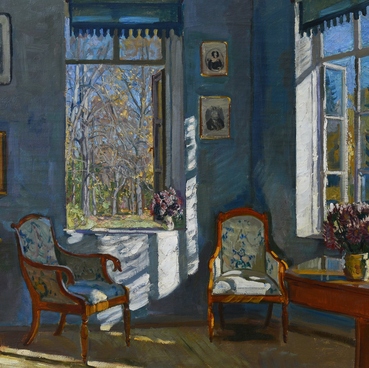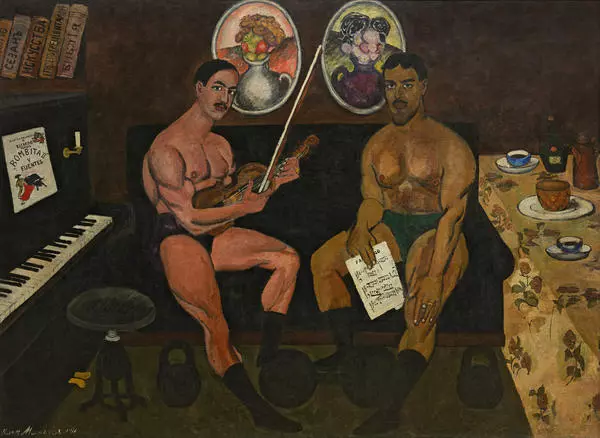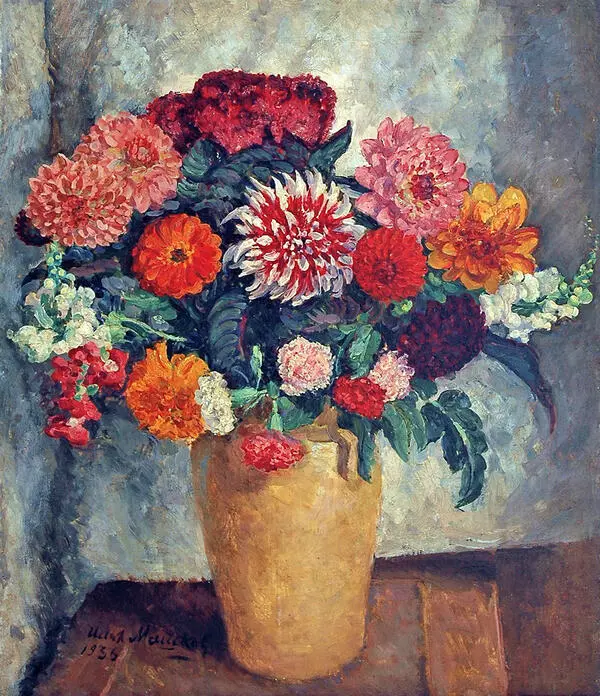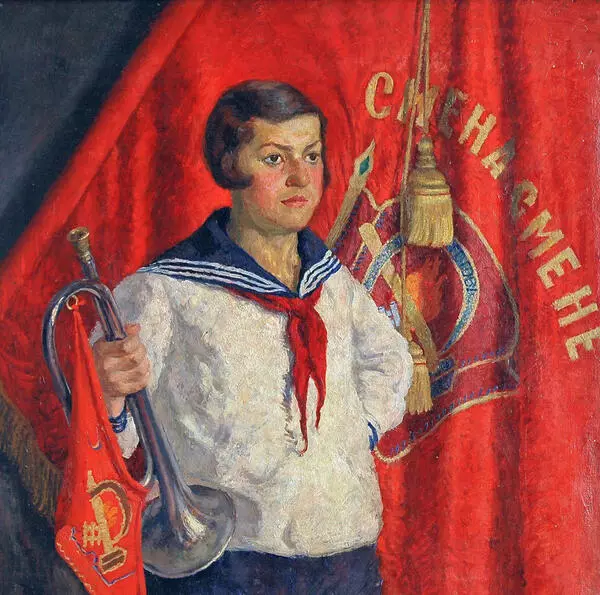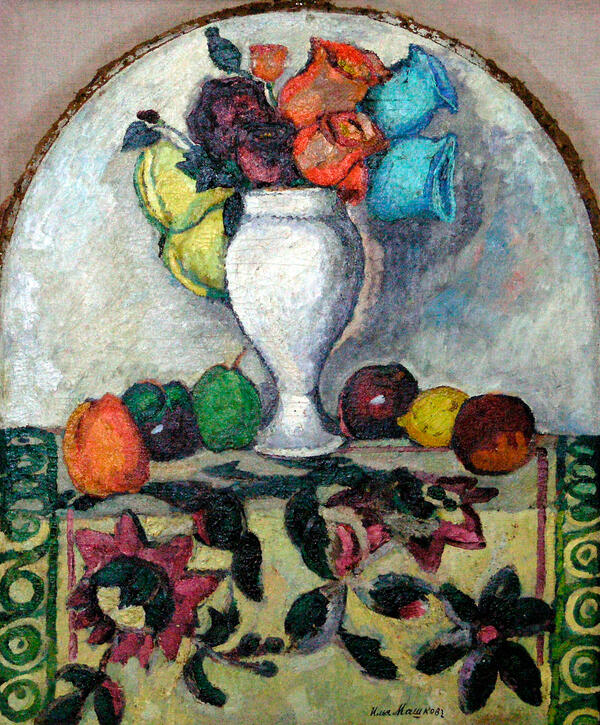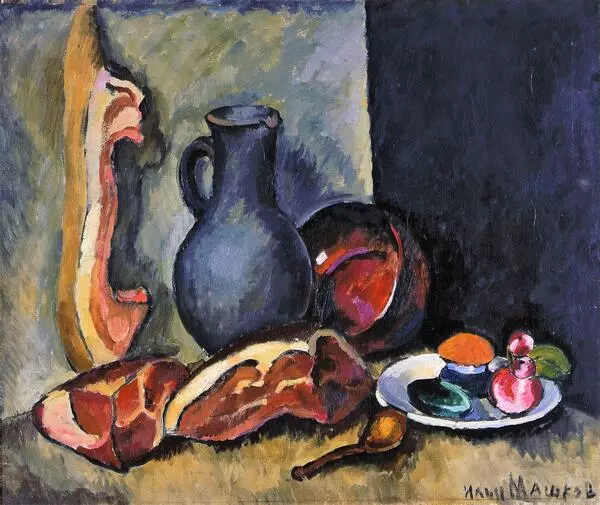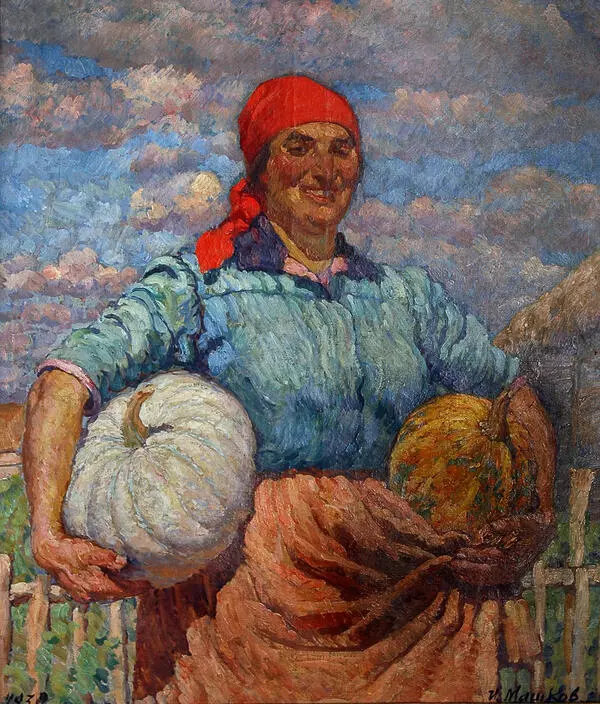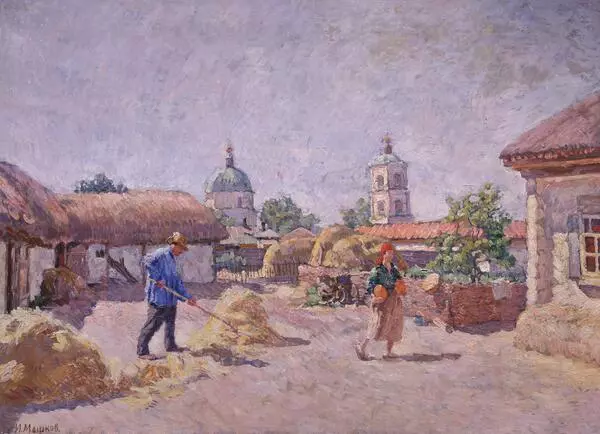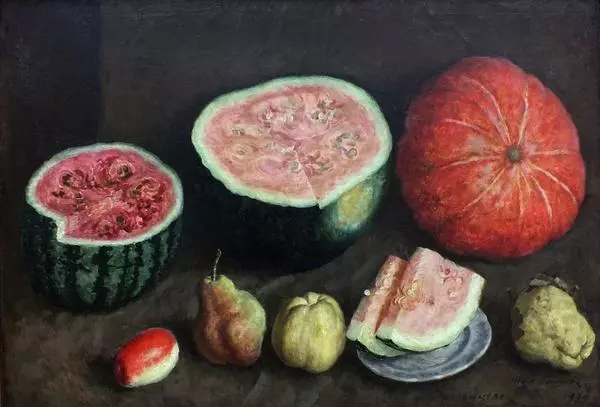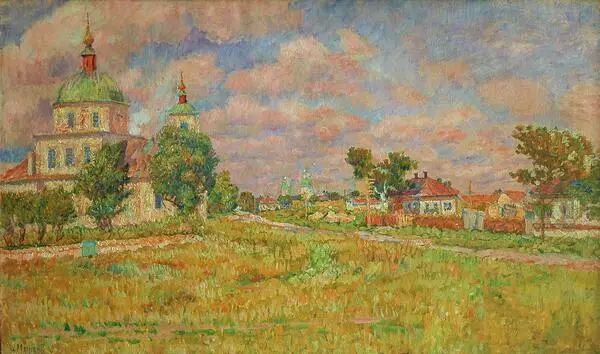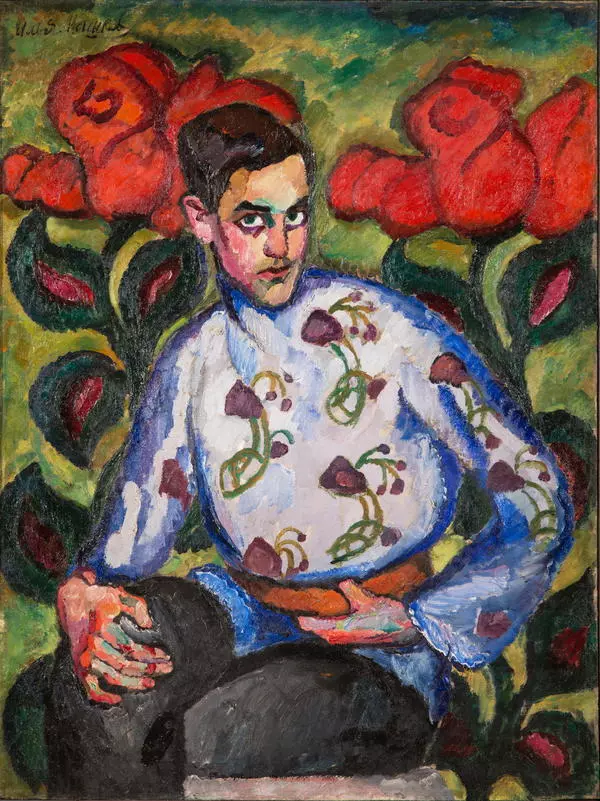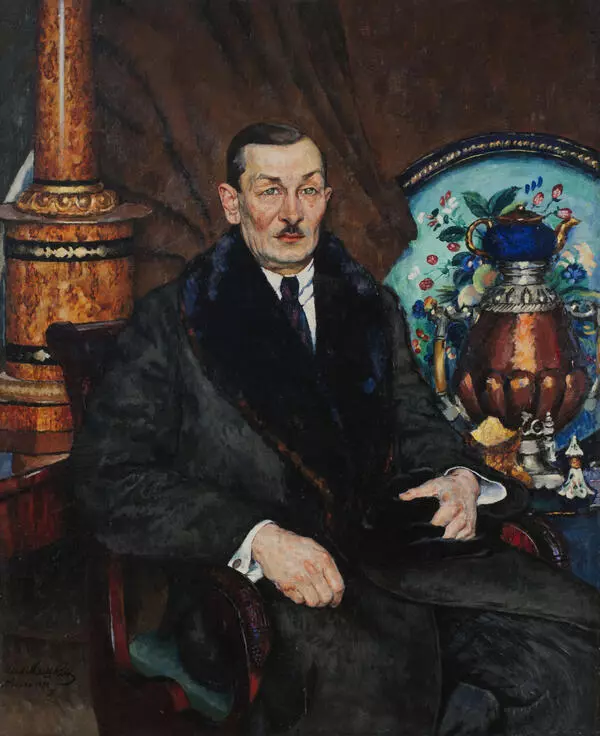In the 1920s, IlyA MashkOv dedicated his artworks to the topic of earthly, festive being, reflected in everyday things and images. Many of his early paintings are based on vivid sensuality. We can clearly see that in the iconic ‘Still life with a SamovAr’ from the collection of Novosibirsk State Art Museum. Mashkov gathers different objects in one picture: a samovar, a butter dish, a bright porcelain plate, and fruits. They look all too natural. It helped art critics come to the conclusion that Mashkov’s art is kinesthetic in nature since he can convey physical feelings like no one else.
The skull is a traditional reminder of the transience of life, the mirror resembles the flight of time—another topic that the artist would often raise. For Mashkov, it was important to demonstrate that the mirror is unable to capture the image of the world. Therefore, it is opposed by the transforming power of palette as a symbol of art that can capture the moment and make it last forever.
The artist paints with a free brush—the strokes are dense, colorful, vivid, and tangible. He strips the objects of extra details as if he were chiseling them from the canvas like a sculpture. Mashkov makes the painting look vigorous and robust through bright colors.
During this period, Ilya Mashkov’s work was inextricably linked to the avant-garde movement. He was one of the founders and an active member of the famous avant-garde group, daringly named ‘Jack of Diamonds.’ Together with other artists representing this movement, he brought new values to Russian painting, which go against the realism of the Itinerants and decorativeness of such art groups as ‘World of Arts’ and ‘Blue Rose.’
Mashkov’s painting is notable for its exuberant and deep colors. Art historian Dmitry Sarabyanov wrote that avant-gardists “saw beauty in the very surface of the canvas covered with a colorful layer, in the very mash of paint.” Still lives were the most important genre for the artist, allowing him to convey a new message, consonant with contemporary time and its contradictions.
The skull is a traditional reminder of the transience of life, the mirror resembles the flight of time—another topic that the artist would often raise. For Mashkov, it was important to demonstrate that the mirror is unable to capture the image of the world. Therefore, it is opposed by the transforming power of palette as a symbol of art that can capture the moment and make it last forever.
The artist paints with a free brush—the strokes are dense, colorful, vivid, and tangible. He strips the objects of extra details as if he were chiseling them from the canvas like a sculpture. Mashkov makes the painting look vigorous and robust through bright colors.
During this period, Ilya Mashkov’s work was inextricably linked to the avant-garde movement. He was one of the founders and an active member of the famous avant-garde group, daringly named ‘Jack of Diamonds.’ Together with other artists representing this movement, he brought new values to Russian painting, which go against the realism of the Itinerants and decorativeness of such art groups as ‘World of Arts’ and ‘Blue Rose.’
Mashkov’s painting is notable for its exuberant and deep colors. Art historian Dmitry Sarabyanov wrote that avant-gardists “saw beauty in the very surface of the canvas covered with a colorful layer, in the very mash of paint.” Still lives were the most important genre for the artist, allowing him to convey a new message, consonant with contemporary time and its contradictions.
